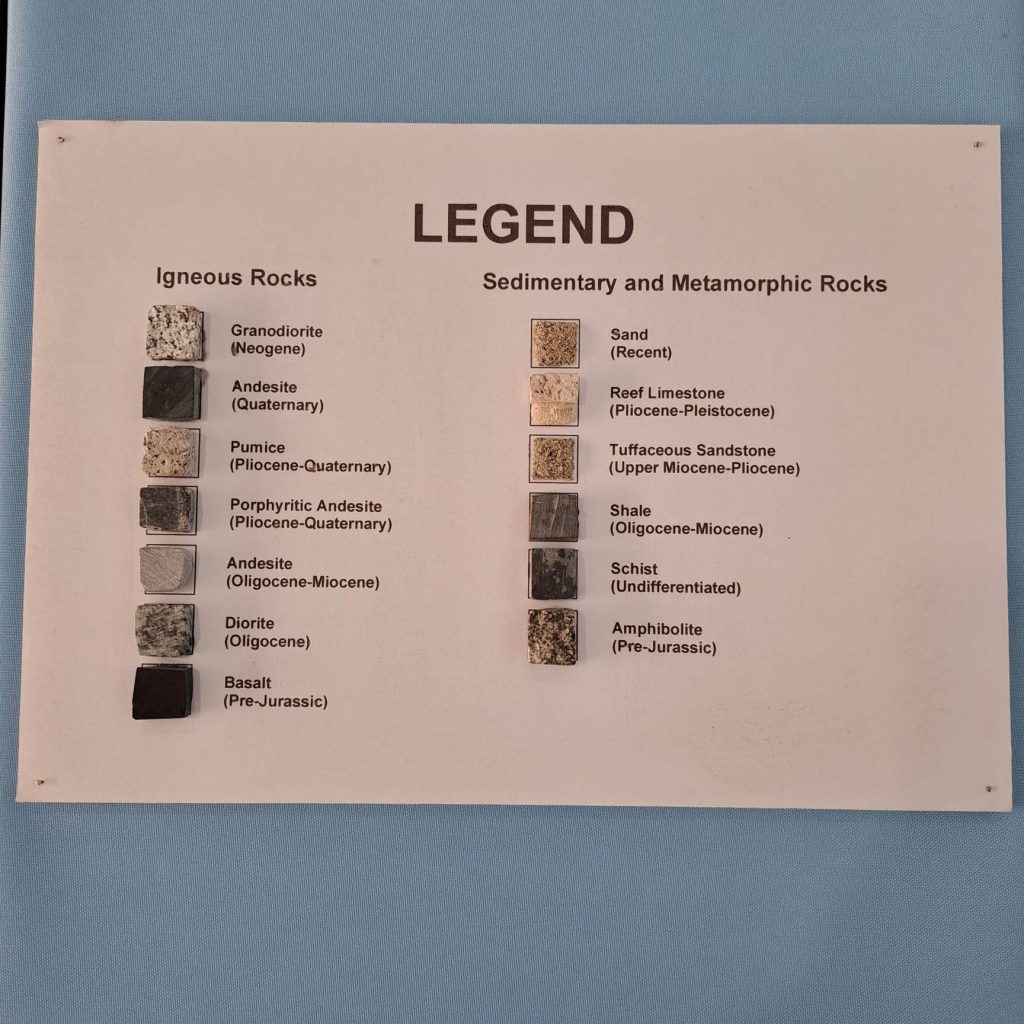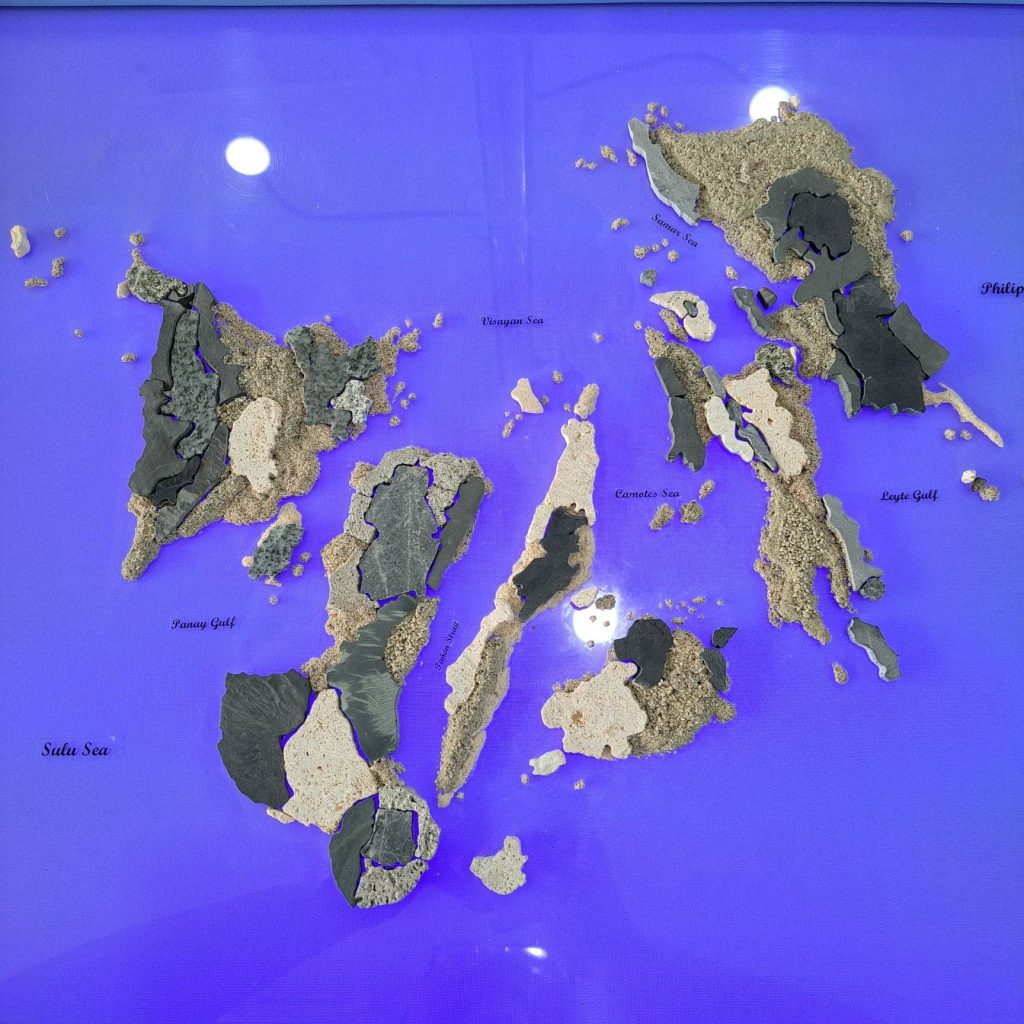Disclaimer: This is not the official press release or communications. The text are taken from the exhibit itself. All credit goes to the National Museum of the Philippines – Western Visayas Regional Museum, International Centre for the Study of the Preservation and for Restoration of Cultural Property (ICCROM), CollAsia Field Projects (Connecting Communities and Collections), and the Cultural Heritage Administration of the Republic of Korea.
A variety of rocks that built the Visayan Islands.

The oldest rocks in the region are located in Buruanga Peninsula in northwest Panay and are composed of more than 250 million years old (Ma) metamorphic rocks. Bohol and Cebu are also underlain in part by a 200-100 Ma metamorphic basement. Like many of the islands, they are covered by mostly Oligocene (33 Ma) to Holocene marine sandstone and shale, and limestones that were forming since the time these islands were under the sea. Granodiorite and diorite are pipe-shaped, and sheet-like bodies that cut these older rocks in Negros, Bohol, Panay, and Guimaras.

In Negros, Leyte, Biliran, Eastern Samar, and central Cebu, andesitic to basaltic lava flows from ancient and recent eruptions cover most of the lands. Pumice and other volcanic debris can be found along the foot of Mt. Kanlaon and Mt. Talinis in Negros. Along with river and beach deposits, these volcanic products comprise the youngest rocks in the Visayas.
Pambansang Museo sa Barangay: Bringing Museum Collections to the Fringes
Parts of the Pambansang Museo sa Barangay:
Haból Panay: The Woven Artistry of Western Visayas
Amlig: Biodiversity Conservation in West Visayas Faunal Region
Elephant and Stegodont: The Gentle Giants of Panay
Other helpful exhibits:
Shells of the Visayan Region
Rafflesias of the Visayan Islands
Protected Areas of the Visayan Region
The Forest Products
The Forest Stratification
The Kanlaon Volcano
The Chocolate Hills
The Pawikan
**Content was only based on the photos I took during my personal visit. I may have missed significant details.
